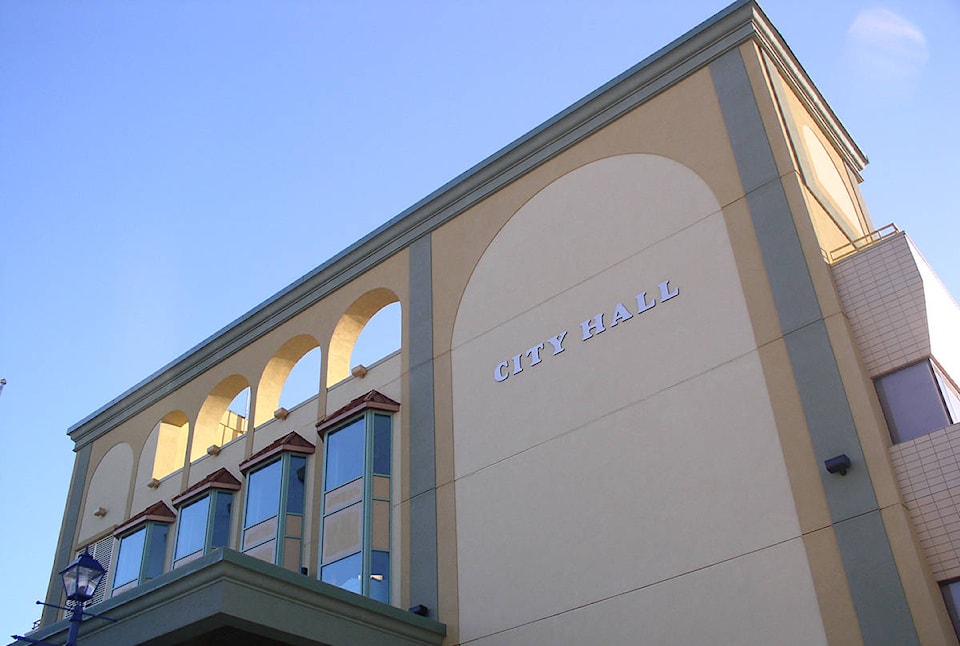The City of Quesnel’s 2018 Annual Drinking Water Report is now available for the public on the City’s website and at the City Hall main lobby.
The report, which is prepared by the City’s utilities superintendent, describes the water system and provides a summary of water quality testing and water management during 2018. Providing the report is a requirement under the British Columbia Drinking Water Protection Act.
In presenting the report that looks back at 2018, Chris Coben, the City’s director of capital works and infrastructure, also looked ahead to the rest of 2019, as he told council that in May, Health Canada updated the maximum acceptable concentration (MAC) of manganese in the Canadian Drinking Water Guidelines to 0.12 mg/L following a review based on assessing all identified health risks associated with manganese in drinking water.
“Establishing the value of the MAC is based on the most sensitive population, which is infants,” he said. “It is recommended by Health Canada that an alternate source of water be used when mixing infant formula where manganese levels exceed the guideline.”
Water samples for manganese at the City water wells vary between 0.014 and 0.582 mg/L, according to Coben.
“With that said, expanded water sampling for manganese at additional locations is now underway, and Northern Health has been engaged regarding the updated guidelines,” he said.
City manager Byron Johnson told council that City staff will be bringing back a report soon that talks about water treatment.
“This report will look at what the options are for [bringing] the manganese to within acceptable levels, and it will also be looking at does that treatment have to include chlorination and what are the options around that, what are the costs of those various types of systems,” he said, adding City staff will then do everything they need to do to be grant-ready so they can apply for grants for any new water treatment system.
Johnson says they also plan to hold a community meeting around water treatment once they’ve done the research, and they will have a workshop for council as well so they can understand the impacts of this and how it affects their bigger visioning process for the overall water system.
“Certainly, the prospect of chlorinating our beautiful water is a real concern to me, and I’m sure it’s a real concern to the average Quesnel citizen,” said Coun. Ron Paull. “We’ve prided ourselves on having absolutely pristine water.”
The City of Quesnel water distribution system provides untreated potable water to approximately 10,500 residents, commercial businesses and the local industry.
The water system is comprised of six operating groundwater production wells, eight reservoirs, five booster pump stations, two main PRV stations and approximately 114 kilometres of water main, with 457 fire hydrants and 3,566 service connections, according to the water report. The City also operates one bulk water delivery site where, for a fee, customers fill their water container with potable water.
Water consumption for the City of Quesnel in 2018 amounted to a total of 2,718,996 cubic meters, which is an increase of seven per cent from the 2017 total volume, according to the report.
Water sampling in 2018 showed 347 samples tested for Ecoli, resulting in zero exceedances. As well, 347 samples were tested for Total Coliform, resulting in eight exceedances, with subsequent testing proving negative for Total Coliforms.
According to the report, the majority of customer complaints are of “dirty” or black water, and this is due to manganese found in the City water, which adheres to pipe walls in the distribution system until it is disturbed or breaks free. Homeowners are advised to run a cold tap until the water clears. In some cases, the City will flush the mains through a hydrant or blowoff.
All mains are flushed each fall to remove mineral scale and building in the lines, in addition to ensuring proper operation and maintenance of all City fire hydrants.
The report also notes there are occasional complaints of cold water smelling like rotten eggs or sulphur. This is caused by the City water having a reaction with the small diameter “feed line” tubing, which connects the household plumbing to the faucet under the sink. It is most common in homes that have new or recently-upgraded taps or plumbing fixtures. A corrective measure for this is to suggest homeowners replace the feed lines with metal tubing such as copper or, alternatively, clean the lines with household bleach, then rinse and re-install.
READ MORE: City of Quesnel working with Northern Health to address new drinking water guidelines
